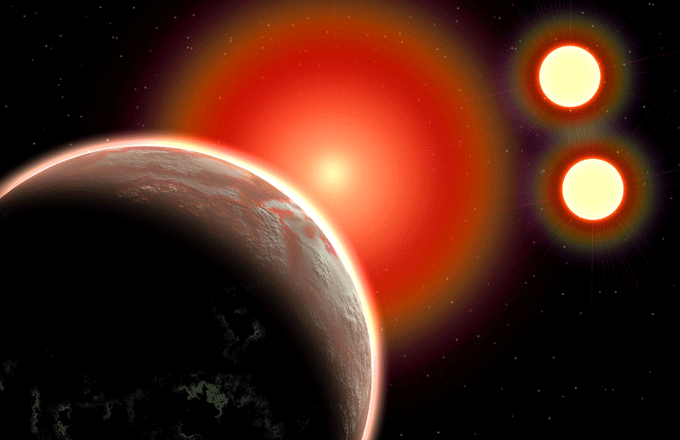
According to a paper published in the journal Science Advances, astronomers have discovered an exoplanet orbiting our nearest neighbor, the star Proxima Centauri, which sits just 4.2 light-years from Earth. Practically a stone's throw.
This newest discovery set to make worldwide nerds tumescent comes after scientists found a potentially habitable planet, Proxima b, orbiting around the same star back in 2016. Universe Todaystates that this second planet, currently known as Proxima c for obvious reasons, is probably too far away for liquid water, but nevertheless it will lead to intensified interest in the Proxima Centauri system.
They wrote that follow-up tests are necessary to confirm whether it's a planet or not, but that there's reasons for optimism. Put in a sharper way, they wrote:
The discoverers of this new planet, Proxima c, say that follow-up observations are needed to confirm it as a planet. Changes in the stellar activity of Proxima Centauri indicated the presence of another planet. But they also say that the data they have can’t be explained in terms of any stellar activity itself. Due to its proximity, and also its angular separation from the star, it is a prime candidate for follow-up observations—and even imaging—with next generation telescopes.
It's reported that the planet is likely a super-Earths, which means it has a mass higher than earth's but lower than ice giants Neptune and Uranus.
As for raw numbers, Proxima c has mass about half that of Neptune. Scientists think it makes a full orbit of Proxima Centauri every 5.2 Earth years. Additionally, Proxima c's orbit is roughly 1.5 times that of our planet's, and it'll have a temperature of -200 C if it doesn't have an atmosphere.
Its discovery was made after researchers speculated another planet could exist in the Proxima Centuri system. To test this theory, astronomers used the Atacama Large Millimeter/submillimeter telescopes in Chile (like you didn't know where Atacama is) to try and trace light signals from that way. The study, printed Wednesday, came about after its authors looked at 17+ years of radial velocity data to determine if those signals were coming from a second orbiting planet.
Researchers can't completely rule out that the signal was caused by the star's magnetic field, but they believe in Proxima c's presence because that signal was traced over a nearly 2,000-day long period.
The study's author, Fabio Del Sordo, made it clear there's still much to learn about our cosmic next door neighbor. "Even the closest planetary system to us may retain interesting surprisies," he said, according to CNN. "Proxima Centauri hosts a planetary system that is more complex than we knew, and we do not know how many unknown features are waiting to be discovered."
Researchers added that the discovery is tantalizing because future studies could yield info about how low-mass planets form around low-mass stars. CNN adds that this planet contradicts the typical theory of how super-Earths form. They write that it sits beyond the "snowline" of the system, so any water on it will have likely been frozen. That matters because super-Earths are usually found near snowlines, but not past them.
Let somebody who actually knows what they're talking about, study author Mario Damasso, explain it.
"The formation of a super-Earth well beyond the snowline challenges formation models, according to which the snow line is a sweet spot for the accretion of super-Earths, due to the accumulation of icy solids at that location," Damasso said. "Or it suggests that the protoplanetary disk was much warmer than ususally thought. In general, there's nothing preventing the existence of Proxima c there where we spot it, but the formation and evolutionary history is a subject worthy of deeper investiation."
Feels good to pretend to be smart for a moment.
